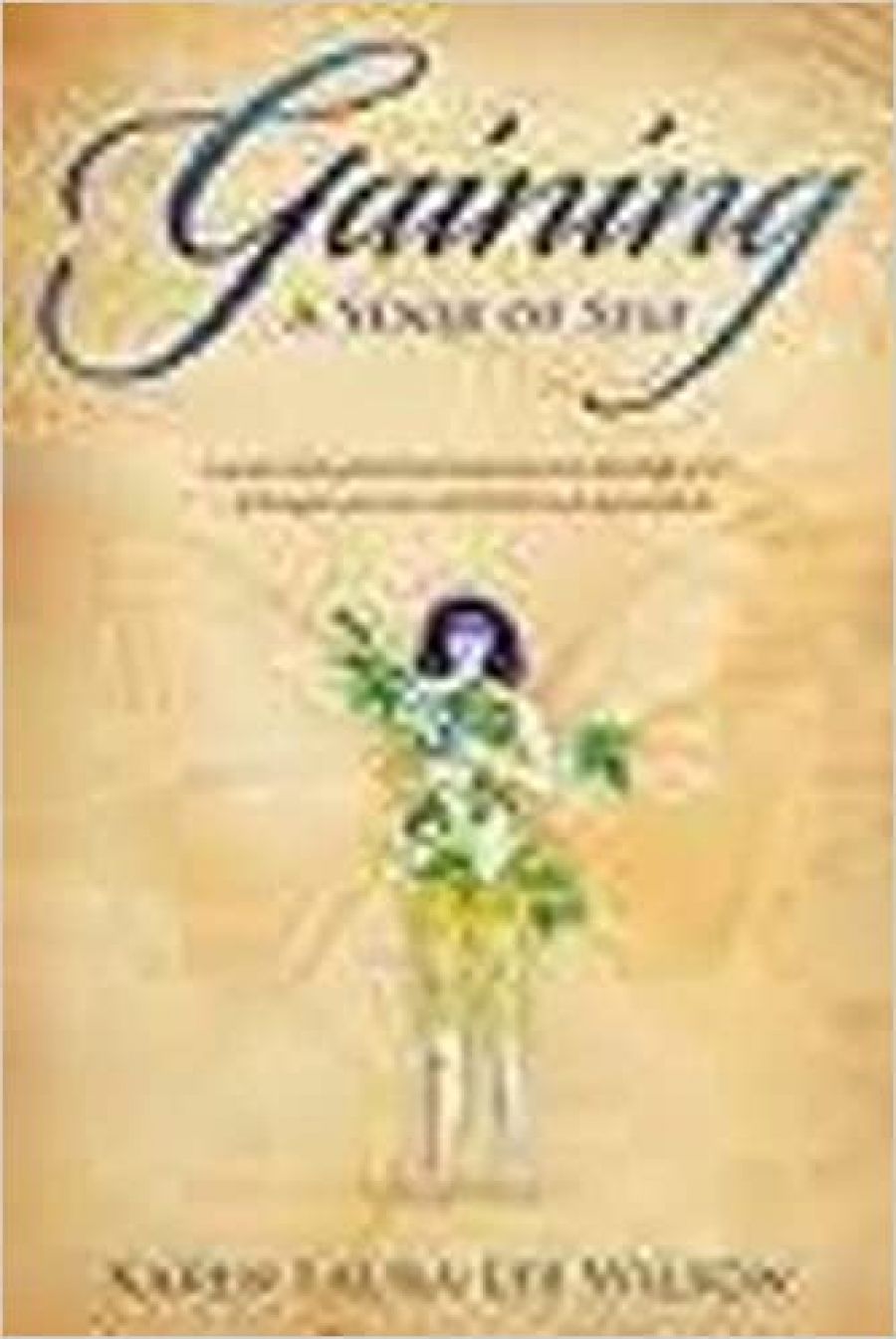
- Free Article: No
- Contents Category: Society
- Review Article: Yes
- Online Only: No
- Custom Highlight Text:
Gaining a Sense of Self is the record of Wilson’s first twenty-five years, a story that obviously took great courage to revisit, recreate, and publish. Born in 1942 to a couple whose marriage was already disintegrating, Wilson had a childhood of poverty, hunger, and abuse. Her father, initially absent because of his work in the navy, left the family when Wilson was six years old, and she rarely saw him after this. It was from her mother that Wilson suffered physical and psychological abuse. This appears to have started when Wilson was very young: she describes being battered by her mother when she accidentally broke a doll at the age of two.
- Book 1 Title: Gaining a Sense of Self
- Book 1 Biblio: Sid Harta Publishers, $24.95 pb, 464 pp
As with many abused children, Wilson internalised her mother’s scorn for her as ‘useless’ and ‘undeserving of having such a lovely mother’. Her mother comes across as narcissistic, bitter, cruel, and unpredictable. She punishes Wilson and her brother Malcolm when, starving, they steal food. She beats them when they ‘show her up’ in front of other people by being honest. She repeatedly strikes the six-year-old Wilson when another child steals her coat. She is manipulative and emotionally abusive, especially to her daughter. This cruelty continues, with only short breaks, well into Wilson’s adulthood. In contrast, Wilson’s brother is supportive, and protects Karen as much as he can.
In 1950, when the parents’ marriage is finally over, her mother sends Wilson to Nazareth House in Brisbane. In a chapter titled, ‘To Hell and Back’, Wilson describes the horrendous treatment that she and the other children at the orphanage experienced. Here, Wilson’s story dovetails with other survivors’ stories of Nazareth House in the 1940s and 1950s. Wilson was unusual in that she lived there less than a year. The harm, however, was already done. Not only was Wilson physically unwell, she had been psychologically damaged: ‘It was as if my personality had been sucked out, my spirit crushed, and what was left was a shadow of my former self.’ Slowly, she begins to assert her own will in her relationship with her mother. She does well at school, gains entry to university, and takes on numerous part-time jobs to fund her studies. There is humour and joy in her memories of friendships, travel, and her own growing sense of self-esteem. She has some disastrous encounters with men, having learned little about successful relationships, but the book ends with her marriage to George, to whom she is still married forty years later.
This is not a literary book. It is competently written in a plain, serviceable style. Few of the characters come to life for the reader; even Wilson’s mother feels distant and slightly unreal. We sense some of the reasons for the mother’s behaviour, but there is no explication or unveiling of a pattern for the reader, who is likely to be less forgiving than the author. The best parts of the book are the early childhood chapters, where individual moments become emblematic of a life. The relentless detail of all aspects of Wilson’s experiences as a teenager and young adult lessens the interest of the story, even though the reader cares about the narrator. The craft of omission is missing here. Slabs of Wilson’s diary are reproduced; although the immediacy of the voice is appealing, the accumulation of daily detail tends to reduce the narrative dynamism.
Drusilla Modjeska suggests in her book Timepieces (2002) that ‘truth’ in a memoir might be less about factual accuracy and more about ‘the nature of the relationship between the memoirist and her material’. She argues that we might think of memoir as a mapping of the mind as well as the recreation of experience, and that readers will respond to the sensibility of the writer as manifest in her voice and in the way the voice encompasses the material with which it works. In Wilson’s book, the focus is entirely on factual accuracy and the recreation of experience. There is little interest in the complexities of memory and truth, the art of telling, or the author’s sensibility and relationship with her own material.
However, it is probably inappropriate to look for aesthetic allure or narrative complexity in a memoir such as this. In titling her book Gaining a Sense of Self, Wilson has foregrounded the recuperative purpose of her work, a purpose she outlines in her introduction, saying:
I am writing my memoirs to help people like me who have suffered child abuse to help their families understand how the impact of the abuse can also impinge on their lives. In many instances the writing was a torturous experience as I relived horrific events and suffered consequences in their recall. I also hope it will be an appropriate resource for professionals who treat the abused. I went through hell in my formative years, yet I survived.
This book is less memoir than testimony, an act of witnessing that goes beyond the individual and speaks to a damaged and damaging community. By giving voice to her personal trauma, Wilson is performing an act of healing for herself and, she hopes, for her readers. She is establishing her own agency and identity through self-revelation and the painstaking witnessing of her past. This is important work, because trauma is not just about destruction – it is also about survival. Karen Laura-Lee Wilson is a courageous and compassionate survivor.


Comments powered by CComment